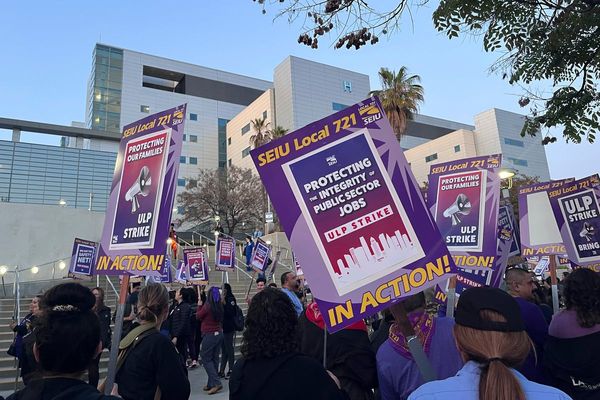
Forty years after the original US TV adaptation of Alex Haley’s book Roots: The Saga of an American Family, the History channel releases this new version, Roots (BBC4), first shown in the US last year. I was two when the original became a runaway hit and I’m ashamed to say I haven’t sought out the DVD since. The original isn’t the kind of series broadcasters seem keen to repeat for some reason. But this harrowing tale of human subjugation and suffering has lost none of its power to shock. At a time when many are trying to focus on what unites rather than divides us (for obvious reasons), it’s a shame this remake is tucked away on BBC4 where a relatively small audience will find it. It should be required viewing for anyone with just an abstract idea of what slavery actually means.
The relentlessly distressing tale of Kunta Kinte, an 18th-century Mandinka tribesman abducted from his village in the Gambia and sold as a slave in the US, stars former EastEnders actor Malachi Kirby in a stunning breakout performance. He infuses the young Kinte with a dignified rage and tense physicality that he deploys with absolute precision. It’s no easy thing to play someone in a permanent state of fury without ever letting that internal pot of wrath boil over. He controls it admirably and demands your eyes whenever he is on screen.
“This is how I heard about the boy, Kunta Kinte. And this is how I’ll tell you the story,” declares the gravelly narration of Laurence Fishburne (playing Harvey, the book’s author) as we arrive in west Africa in 1750 to witness Kinte’s birth. As the action skips forward through his childhood to his coming of age as a warrior, the brutality of his rural life and the limitations placed upon him by his parents make this more than a clearcut story of a man ripped from the bosom of his loving family. When he is taken by the Mandinka’s enemy and sold into slavery, he is running away from a future of arranged marriage and working for the Mandinka’s king. He wants to go to Timbuktu to study but instead, he finds himself utterly dehumanised, branded as livestock and thrust into a perpetual hell.
He swoons from the branding iron and awakes below decks, mid-voyage to America, chained to the floor like an animal, vomiting over himself and professing his shame when he realises his uncle is also chained up nearby. “The shame is not ours, Kunta,” replies the older man.
The male slaves are kept in the hold, occasionally fed unidentified slop and told to move their limbs to the beat of a drum in order to keep their valuable bodies working until they are sold in Maryland. The food refusers are held down and force-fed, called “monkeys” and “niggers”. The depiction of this horror is unflinching, but needs to be.
There follows an uncompromising hour or so of extreme physical and mental hardship, brutal violence and inhuman treatment as Kinte arrives in America and is sold to James Purefoy’s coldly offhand tobacco plantation owner, John Waller, who peers into Kinte’s mouth, checking him like a steer before declaring him fit for purpose.
After the dark intensity of the voyage, the sunny skies of Virginia come as a brief visual relief before Kinte’s new nightmare begins. Forest Whittaker’s Fiddler, a favoured servant of the Waller family, is also a welcome arrival, befriending Kinte and urging him to cool his urge to escape for the sake of them all.
The white people are almost universally curt, unfeeling and without nuance when we first meet them. But this isn’t their story. All save for Matthew Goode playing Waller’s more compassionate brother, William, who at least displays a shred of humanity. He is a lone voice. Tony Curran’s Connelly, the dread overseer who beats submission into the recalcitrant slaves and wields his club with just enough force to maim but not kill, in particular has no obvious good qualities, but is superbly played. At a time when this was the accepted way of things, perhaps it’s more believable that such people would never stop to ask themselves, as Mitchell and Webb had it: “Are we the baddies?”
The effects teams have their work cut out strewing the screen with blood, flayed flesh and decapitated heads on spikes. While it is gruesome to witness the level of human suffering depicted here, it would be pointless to tell the story without it.







